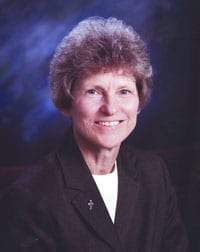The Perception Gap Osteoporosis Group Urges Women To Discuss The Risk With Their Doctors
Even though the majority of women age 45 and older have at least two risk factors for osteoporosis, only 15{06cf2b9696b159f874511d23dbc893eb1ac83014175ed30550cfff22781411e5} of those women not diagnosed by a doctor believe they are at risk for the disease, according to a new survey conducted by Roper Public Affairs and Media on behalf of the National Osteoporosis Foundation (NOF).
Studies conducted for NOF estimate that the number of women age 50 and older who have osteoporosis or are at risk for developing the disease will increase from about 30 million currently to more than 35 million in 2010.
Osteoporosis, or ‘porous bone,’ is a devastating disease characterized by low bone mass and structural deterioration of bone tissue, leading to bone fragility and increased susceptibility to fractures, especially of the hip, spine, and wrist, although any bone can be affected.
The survey tested women’s knowledge of osteoporosis, the actions they take to keep bones healthy, their overall concerns about aging, the information sources they rely on, and their perception of personal risk of developing osteoporosis. The survey was funded as part of a grant that NOF received from the U.S. Department of Health and Human Services’ Administration on Aging.
“Women need to know their health risk for osteoporosis and what they can do to prevent the disease,” said Josefina G. Carbonell, the federal agency’s assistant secretary for Aging. “While we know that effective prevention, diagnosis, and treatment strategies exist for osteoporosis, many women have not taken action. We want to reverse this trend. We want women empowered on this issue, and we want them taking action to prevent this debilitating disease.”
Little Concern
“Women do not perceive themselves to be personally at risk for osteoporosis, even though one in two women aged 50 and older will experience an osteoporosis-related fracture in their lifetime,” said Judith Cranford, NOF executive director. “Women age 45 and older may be aware of osteoporosis, but do not relate that awareness to their own risk.”
Dr. Bess Dawson-Hughes, NOF president, said one of the group’s goals is to “bridge the gap between perception and reality that is underscored by this survey, and encourage women to assess their personal risk and take the preventative steps that can help them to protect their bones, including speaking to their health care professional.”
The survey, conducted last summer, included 500 women age 45 or older. When asked to identify their level of concern about a range of common health issues, only 62{06cf2b9696b159f874511d23dbc893eb1ac83014175ed30550cfff22781411e5} of respondents said they are “very concerned” or “somewhat concerned” about their risk of bone loss.
The top risk factor cited for osteoporosis among survey respondents was having normal or early menopause. Other risk factors — increasing the likelihood for developing osteoporosis — included being small-boned or thin, having a family history of osteoporosis, a history of smoking cigarettes, currently smoking, and leading a sedentary or inactive lifestyle.
Many women, more than four out of ten, are not talking to their doctors about osteoporosis or keeping their bones healthy, the survey suggests. Over half — 54{06cf2b9696b159f874511d23dbc893eb1ac83014175ed30550cfff22781411e5} — of women age 45 to 54 are not doing so due to a lack of concern about the issue or a belief that their doctor would bring it up “if it were important.”
Bottom Line
Regardless of age, the women surveyed are aware that early diagnosis and having a bone density test are important. Still, nearly four in 10 have not had a bone density test. These screenings, which measure the amount of bone in different parts of the skeleton and can predict risk of future fracture, should become more common when women reach 55 years of age.
This article was prepared by the National Osteoporosis Foundation, the leading national, non-profit health organization solely dedicated to promoting lifelong bone health in order to reduce the widespread prevalence of osteoporosis and associated fractures, while working to find a cure for the disease through programs of research, education, and advocacy.


Comments are closed.